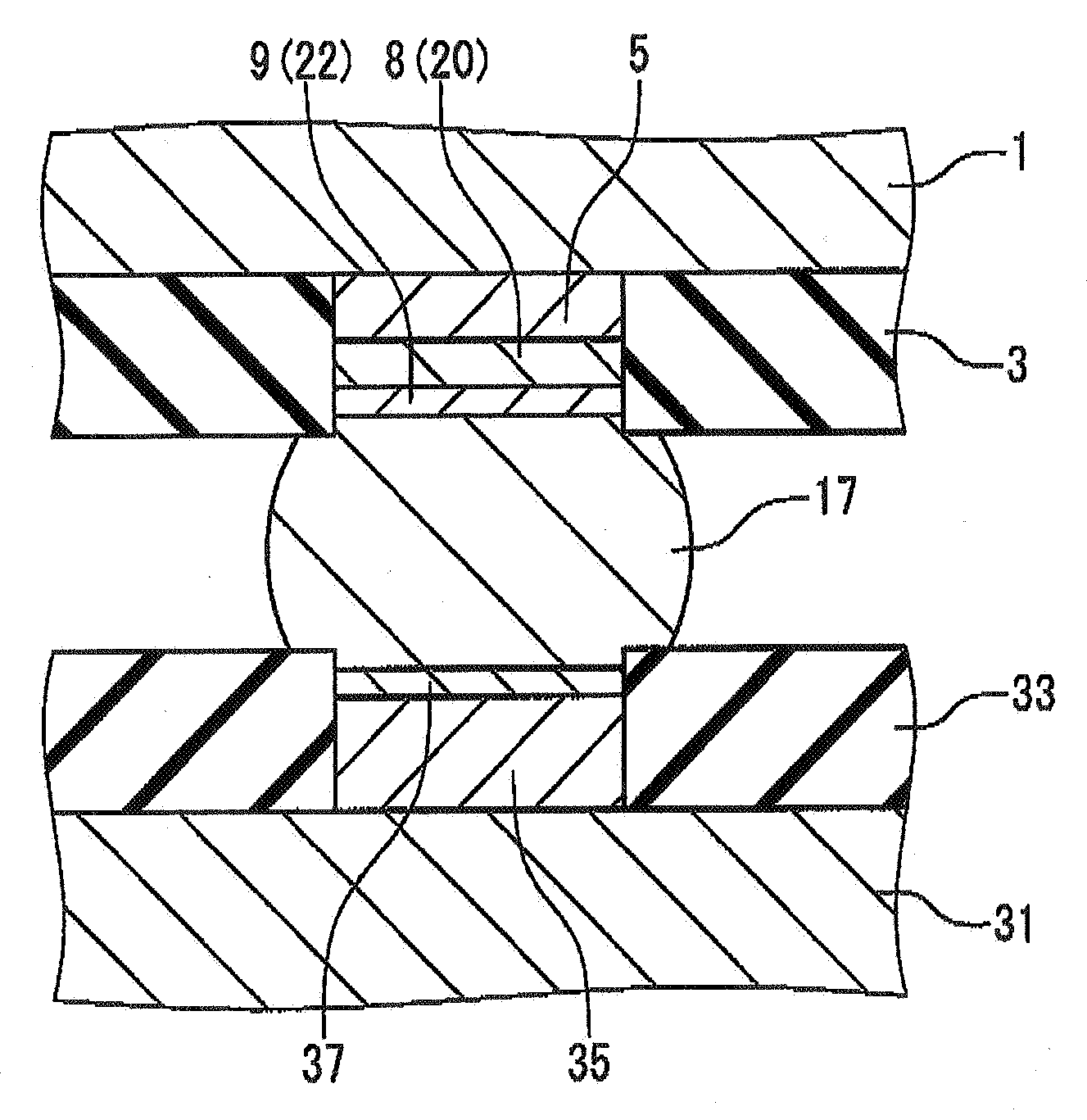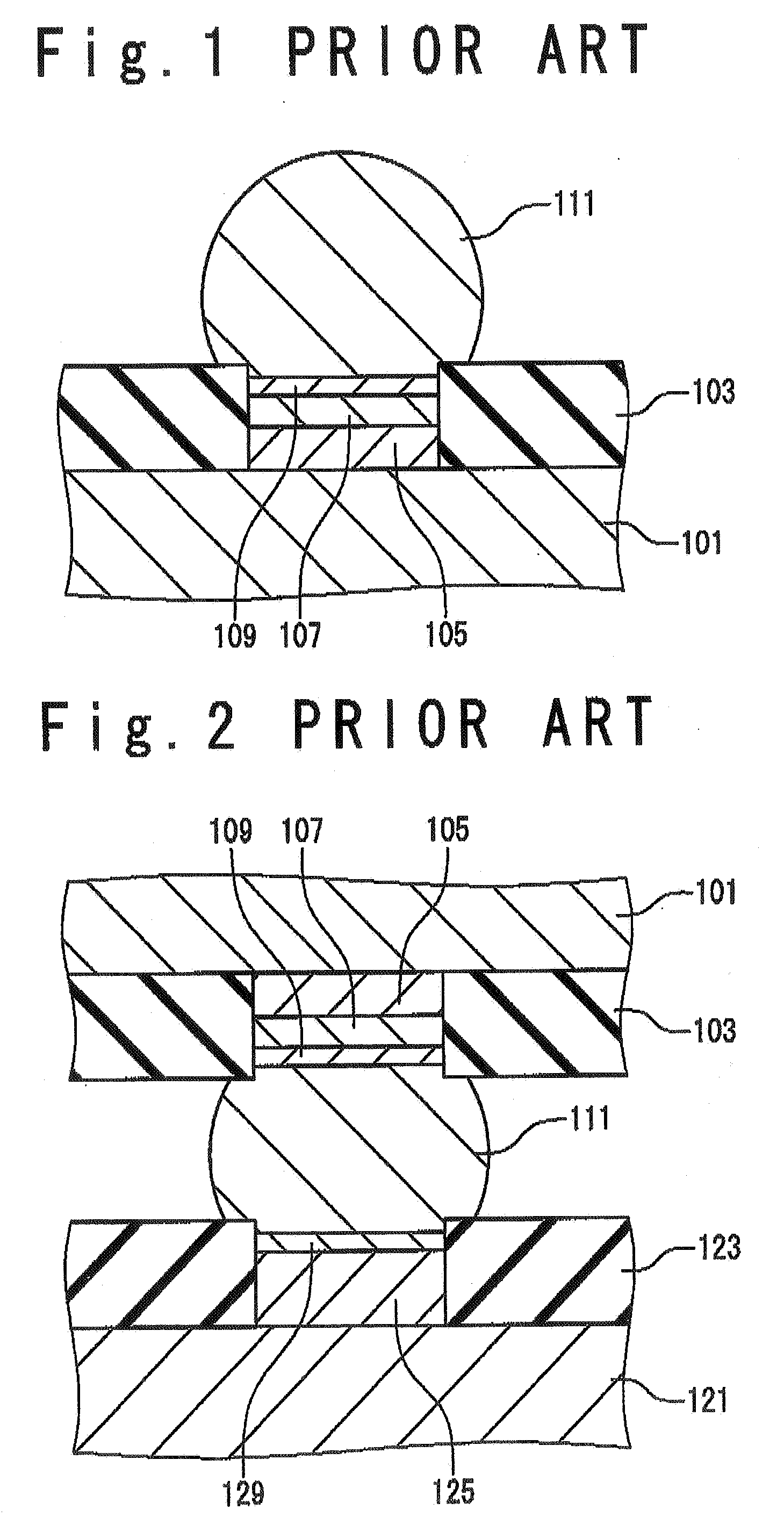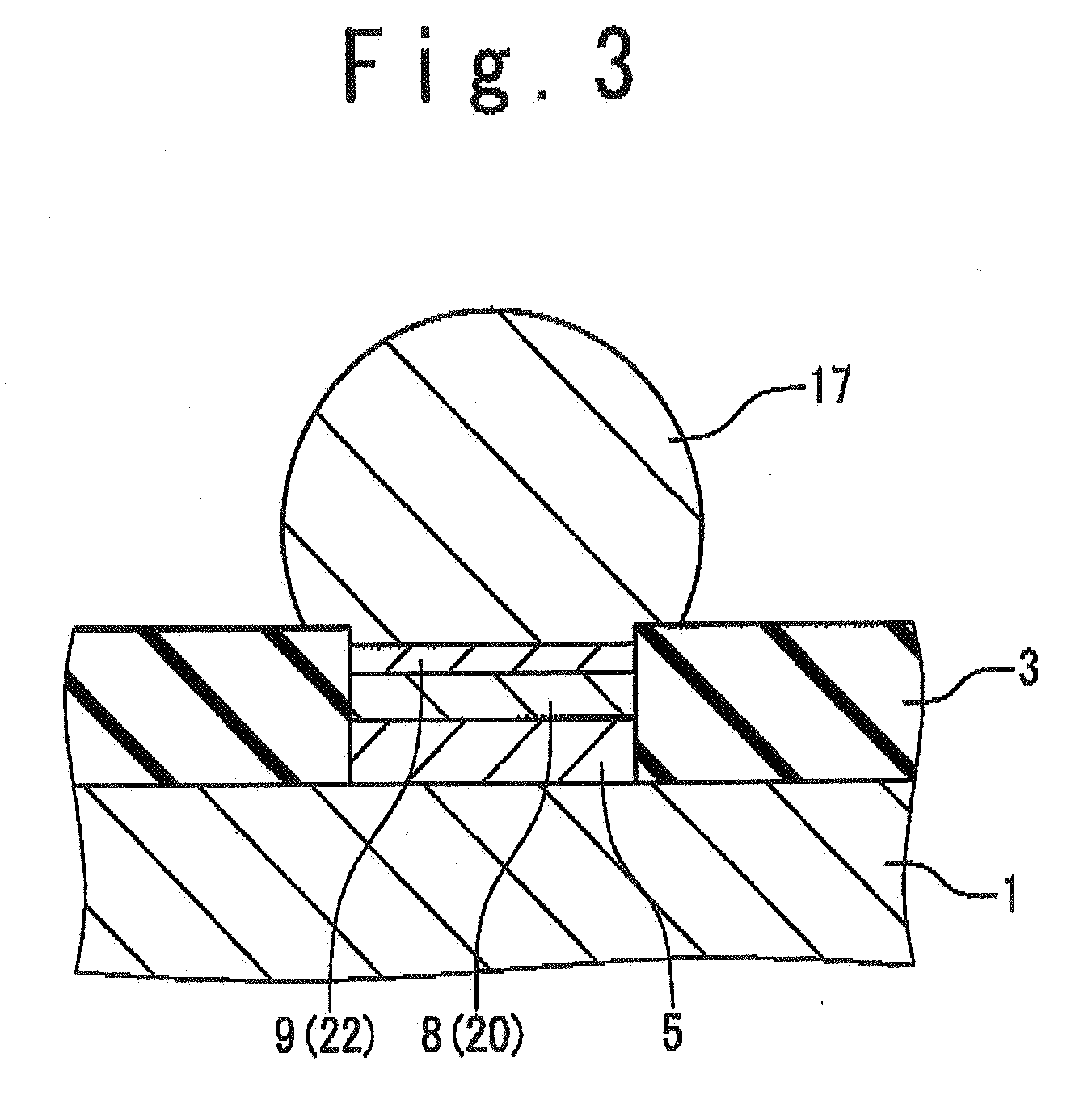Semiconductor device with solder balls having high reliability
- Summary
- Abstract
- Description
- Claims
- Application Information
AI Technical Summary
Benefits of technology
Problems solved by technology
Method used
Image
Examples
first embodiment
[0030] As shown in FIG. 3, in the semiconductor device of the first embodiment, a solder resist 3 having an opening is formed on the substrate 1. A Cu layer 5, a Ni layer 8 and an alloy layer are laminated in turn inside this opening.
[0031] In this embodiment, the alloy layer is the Ni—Zn alloy layer 9 composed of Ni and Zn. The Sn—Ag—Cu-based solder ball 17 is installed on the surface of the Ni—Zn alloy layer 9.
[0032]FIG. 4 is a sectional view showing an example that the semiconductor device of the first embodiment is installed on a mount substrate.
[0033] As shown in FIG. 4, a solder resist 33 having an opening is formed on a substrate 31, in the mount substrate. A Cu layer 35 and an alloy layer (hereafter, referred to as a Cu—Sn alloy layer 37) composed of Cu and Zn are laminated inside this opening. The Sn—Ag—Cu-based solder ball 17 is adhered through the Cu—Sn alloy layer 37 to the Cu layer 35, In this way, the Cu—Sn alloy layer 37 is formed between the mount substrate and th...
second embodiment
[0046] A semiconductor device in the second embodiment differs from the semiconductor device in the first embodiment in that an alloy layer is an alloy layer (Ni—Au—Zn alloy layer 22) composed of Ni, Au and Zn.
[0047] A method of manufacturing the semiconductor device of the second embodiment as mentioned above will be described below with reference to drawings. FIGS. 9 to 13 are sectional views showing the method of manufacturing the semiconductor device of the second embodiment.
[0048] The method of manufacturing the semiconductor device of the second embodiment includes the following steps of:
(1) forming the solder resist 3 having the opening on the substrate 1 (FIG. 9);
(2) forming a Ni inclusion plating layer (the Cu layer 105, a Ni layer 18 and an Au layer 19) inside the opening (FIG. 9), and
(3) installing the Sn—Ag—Cu-based solder ball 17 through the alloy layer (the Ni—Au—Zn alloy layer 22), which includes Ni and Zn as the essential components, on the Ni inclusion plati...
third embodiment
[0056] A semiconductor device in the third embodiment differs from the semiconductor device in the first embodiment in that the alloy layer is the Ni—Au—Zn alloy layer 22.
[0057] A method of manufacturing the semiconductor device of the third embodiment as mentioned above will be described below with reference to drawings. FIGS. 14 to 16 are sectional views showing the method of manufacturing the semiconductor device of the third embodiment.
[0058] The method of manufacturing the semiconductor device of the third embodiment includes the following steps of:
(1) forming the solder resist 3 having the opening on the substrate 1 (FIG. 14);
(2) forming the Ni inclusion plating layer (the Cu layer 5, the Ni layer 18 and the Au layer 19) inside the opening (FIG. 14); and
(3) installing a Sn—Ag—Cu-based solder ball 25 through the alloy layer (the Ni—Au—Zn alloy layer 22), which includes Ni and Zn as the essential components, on the Ni inclusion plating layer (FIGS. 15 and 16).
[0059] The...
PUM
 Login to View More
Login to View More Abstract
Description
Claims
Application Information
 Login to View More
Login to View More - R&D
- Intellectual Property
- Life Sciences
- Materials
- Tech Scout
- Unparalleled Data Quality
- Higher Quality Content
- 60% Fewer Hallucinations
Browse by: Latest US Patents, China's latest patents, Technical Efficacy Thesaurus, Application Domain, Technology Topic, Popular Technical Reports.
© 2025 PatSnap. All rights reserved.Legal|Privacy policy|Modern Slavery Act Transparency Statement|Sitemap|About US| Contact US: help@patsnap.com



